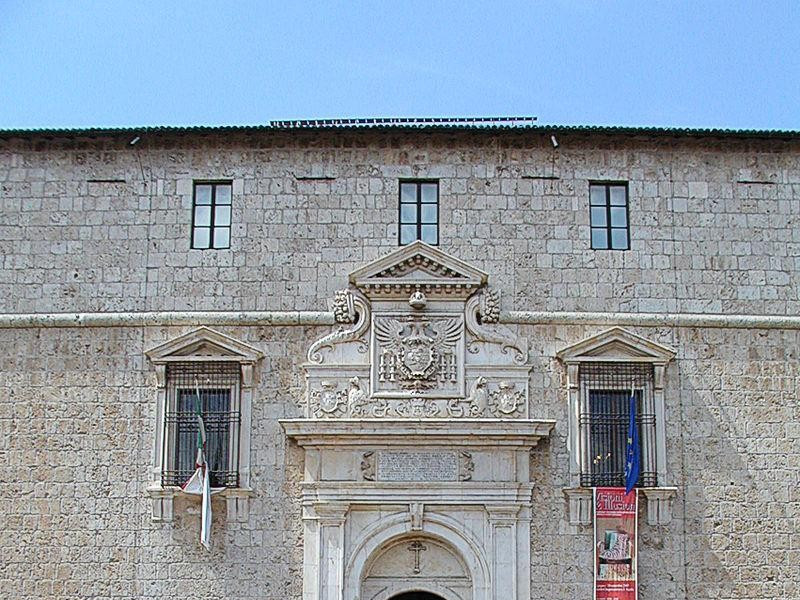Forte Spagnolo
The Spanish Fort was built over a grandiose project of military strengthening, but never used for war purposes. In the seventeenth century it was used as the residence of the Spanish governor. Restored in 1951, it became the National Museum of Abruzzo. It was seriously damaged by the earthquake of 2009 and is not currently accessible. The imposing Fortress is a square, with massive bastions profiles with sharp pattern known as a "spearhead", in each direction of the four cardinal points. The Fort is surrounded by a deep and wide moat, accessible by a stone bridge. The property is surrounded by a huge wooded park, the Castle Park, authentic green lung of the city. The majestic white portal, flanked by Doric pilasters and topped by precious crown with the double-headed eagle, emblem of the House of Austria, is widely considered an absolute masterpiece, attributed to Escriva. Each side of the building, totally devoid of decorative elements, is covered in travertine and fit well one hundred and thirty meters, with walls of considerable thickness. The inner courtyard, square, shows a portico with a double order of pilasters. Of particular interest and beauty are the dungeons of the fort, whose history can be linked to the prison facilities housed in the fortress since its construction.


